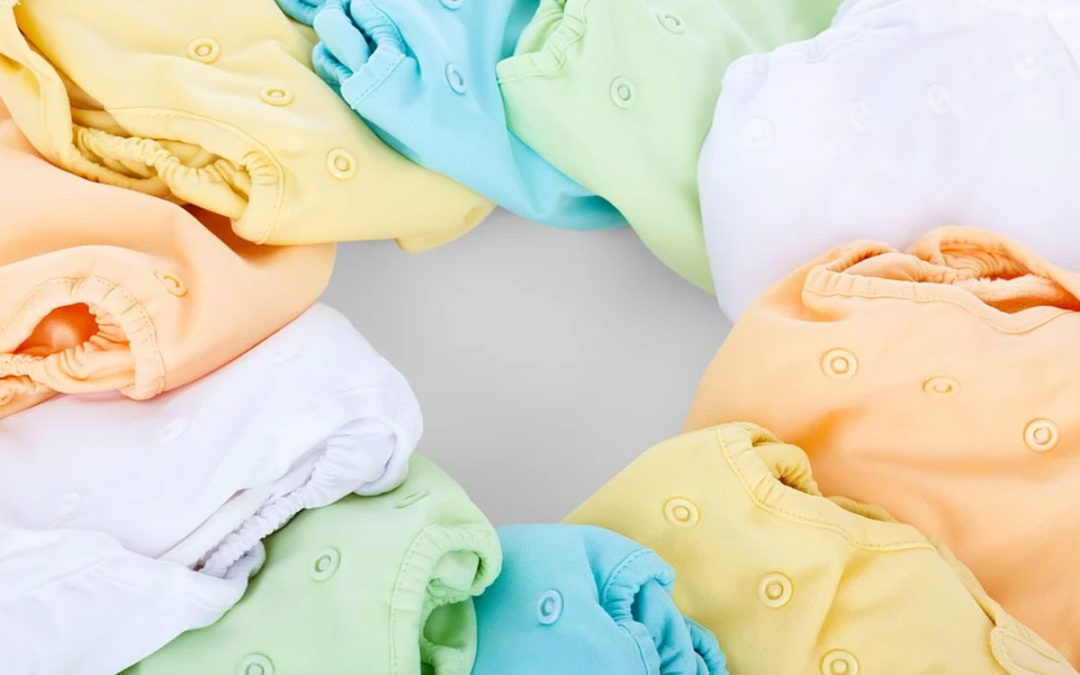Looking for simple, straight forward information about diapering? Take cover! The thought of getting up close and personal with the baby’s bodily function is, well can be pretty icky. Yet, a wet or soiled diaper can spark a crying spell from your baby. The simple solution: It’s time for a change!
For new mothers, this new experience of diapering could be awkward at first but after many diaper changes, they’ll quickly gain confidence and become proficient with the diaper and wipe habit, and won’t even notice what’s going on down there.
What type diapers should be used? Cloth diapers are best, better, and healthier. That is if the new mother or parents commit to using them. If not, using disposable diapers are not premium, but will do. Many use disposable diapers for traveling and especially at busy times, etc. However, they are more likely to promote rashes when the weather is hot or the baby is wet for long periods. Convenience may be desired, however, they do come with some risks. A good tip to remember is that poop should be removed from a baby’s diaper and flushed — even if using disposables!
Fresh out of the womb, babies produce a thick, black, tar-like poop called meconium. It’s good to use a diaper liner in the beginning to avoid tough to remove stains on your cloth diapers. Or, some may choose to use disposable diapers. The meconium stool normally changes to soft yellow in 2 to 4 days.
Because a baby’s skin is very sensitive and delicate it is highly important to check the baby’s diaper often. This helps prevent diaper rash and provides for a happy baby.
During infancy, it should not be a surprise to parents how often the peeing or pooping occurs. If they are a breastfed baby, the diapers are not overly stinky. But if the baby is on formula or have been started on solid foods….whew, the smell will let you know. At times, when there is a diaper change, it may require a complete outfit change due to a poop-explosion. This could be the result of diapers being too small. If so, go up to the next size.
Diapering can be an adventure. To avoid disasters and a great way to help the mothers get it together, before cleaning your little one’s buttock, it is beneficial to have within reach the right stuff. Consider the following:
- Changing Area: You can outfit baby’s changing area with a small, contoured changing pad. During diapering, wrap a cover (cloth diaper, receiving blanket, baby towel) around the pad. That way, you’re mostly laundering the cloths and keeping the changing pad fresh. Or, lay baby on a comfortable surface, placing a cover under them to protect them and the area of the change..
- Diapers: Cotton cloth diapers are best. If you prefer convenience, then different brands of disposable diapers are for your choosing. All fit differently, and are sized according to baby’s weight.
- Wipes: Watch your baby’s backside! Homemade is best. (See natural baby wipes recipe at end of chapter.) or use a cotton washcloth with warm water. The commercial wipes come scented, unscented, moisturizing — it’s like choosing shampoo. They could be toxic. There have been recalls on various brands of baby wipes that were contaminated with bacteria. They had a strange odor and signs of discoloration were reported. The bacteria posed a risk, especially to babies, who have weakened immune systems or chronic lung diseases (like cystic fibrosis). There were several complaints of rash, irritation, infection, fever, gastro-intestinal issues, and respiratory issues. “Wipe these off” and make your own natural baby wipes! (See recipe below)
- Rash Remedy: Many choose baby powder, ointment or cream, which are chemical based and toxic. Should rash or irritation occur, we suggest organic cornstarch or green clay, which are gentler on baby’s sensitive skin and excellent moisture absorbent products.
- Soiled Diaper Container. If using cloth diapers, a diaper pail can be used only if soiled diapers have been rinsed and dried. Unless washing same day soak soiled diapers in hydrogen peroxide and water.
Here is a guide to practice until you become so fast with the diaper and wipe, you won’t even notice what’s going on down there!
- When cleaning baby’s genital area (especially a girl), always wipe from front to back. This helps prevent a bacterial infection. If it’s a boy, drape a cloth over him to prevent getting sprayed.
- With a warm cloth or homemade wipes, wipe baby’s buttocks and make sure you get into all of the little folds around baby’s thighs. If they had a bowel movement, it will take several wipes.
- If needed, sprinkle green clay or cornstarch on buttock or genital areas.
- Put on the new diaper. If cloth, ensure your fingers are under the diaper when you pin them. Consider using a non-plastic cover panty. With the disposable, pull the tabs around baby’s waist and stick them to the front of the diaper. Done!
Diapering isn’t all dirty work; it’s also a time to bond with your baby. Talk to your baby and make eye contact as you change him. If they fuss, try singing, to calm them. Soon you’ll both be happy and smiling. Practice makes perfect! To wrap up the backside of things, here is a economical, do-it-yourself, natural baby wipes recipe:
Natural Baby Wipes
Supplies Needed:
- 1 large roll of Bounty Paper Towels
- 2 Cups of Pure, Spring or Distilled Water (No Tap Water)
- 2 Tablespoons of Liquid Castille Soap (i.e., Unscented, Almond, or Lavender)
- 10-15 drops of essential oil (i.e., Lavender, Lemon, Tangerine)
- 3-4 drops of Tea tree oil (opt.)
- 1 Medium Square Glass Container w/ Plastic Lid (i.e., storage or food container)
Directions:
- First cut the bounty paper towel roll in half. When you have completed cutting the roll, it will look like two oversized rolls of toilet paper. Save one-half for later. Mix water and liquid castile soap, tea tree oil plus drops of essential oil in container. Place paper towels in container.
- Put cover on and allow the water/soap mixture to absorb into The paper towels. You many try turning the sealed container up-side down a few times, or you may choose to pour the mixture from a 2 cup measuring glass over the top of the paper towel roll and let the mixture absorb in. When the mixture has absorbed, remove the cardboard center and pull your wipes from the center of the roll.

